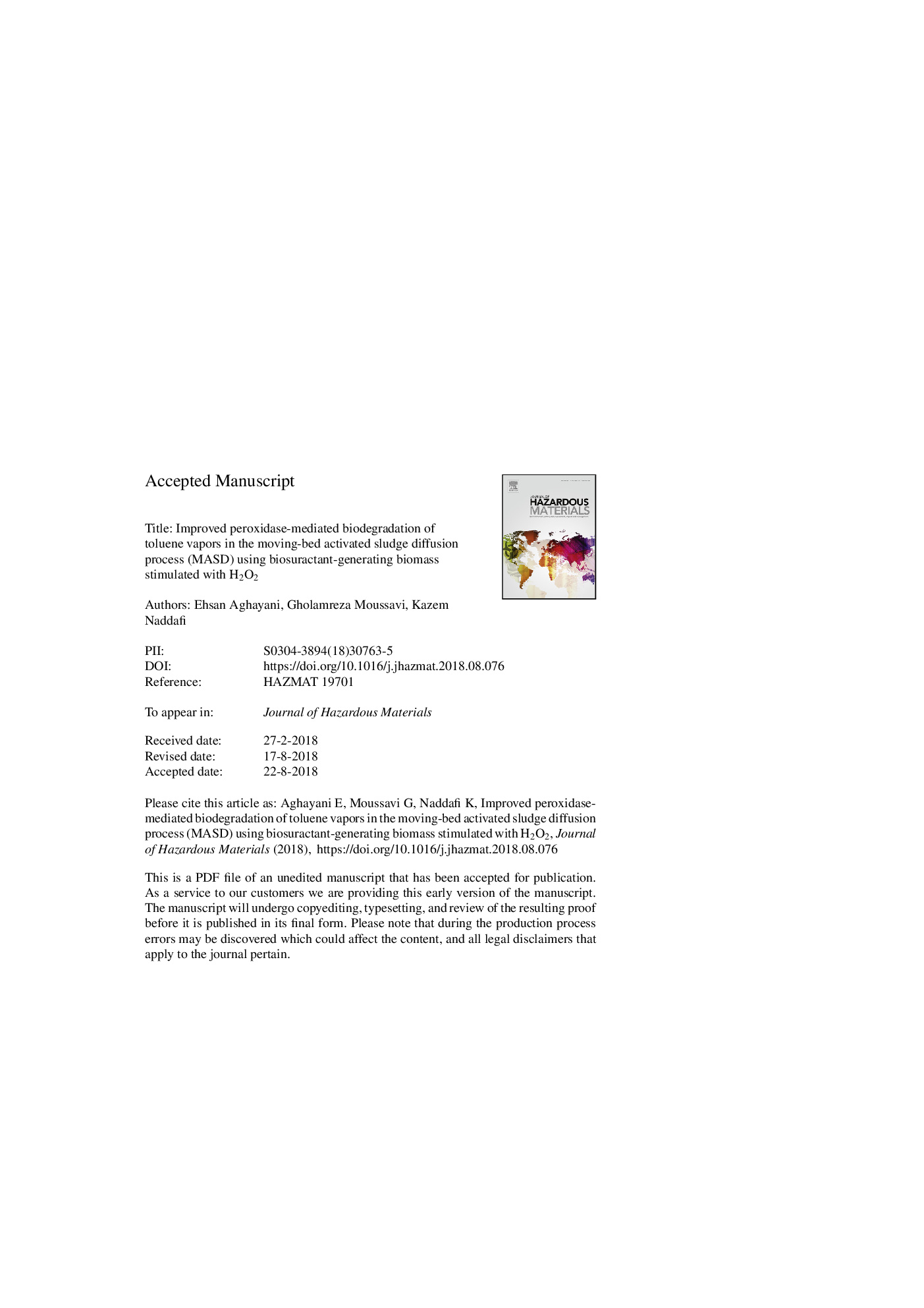| Article ID | Journal | Published Year | Pages | File Type |
|---|---|---|---|---|
| 10139683 | Journal of Hazardous Materials | 2019 | 31 Pages |
Abstract
Two strategies were attempted to improve the biodegradation and mineralization of toluene vapors in the activated sludge diffusion (ASD) process using biosurfactant-generating Pseudomonas spp. and Bacillus spp. mixture. Different operational parameters including toluene concentration, superficial air velocity, biomass concentration, moving-media insertion and H2O2 were evaluated on toluene removal in the ASD process within 550 days of operation. It was found that complete biodegradation and 79.8% mineralization of toluene vapors at inlet loading rate of 144âg/m3.h could be achieved in the ASD process by inserting moving media (MASD) at a volume ratio of 20% along with stimulation of bacteria with H2O2. The concentration of biosurfactant and peroxidase generated in the integrated process (H2O2-stimulated MASD reactor) was 3.7 and 2.5 times of that in the conventional ASD process. The maximum toluene elimination capacity obtained in the H2O2- stimulated MASD process was 285âg/m3.h at an inlet loading rate of around 430âg/m3.h. Accordingly, H2O2-mediated MASD process could be a promising technique for efficient biodegradation and mineralization of aromatic hydrocarbons in the contaminated air streams.
Related Topics
Physical Sciences and Engineering
Chemical Engineering
Chemical Health and Safety
Authors
Ehsan Aghayani, Gholamreza Moussavi, Kazem Naddafi,
